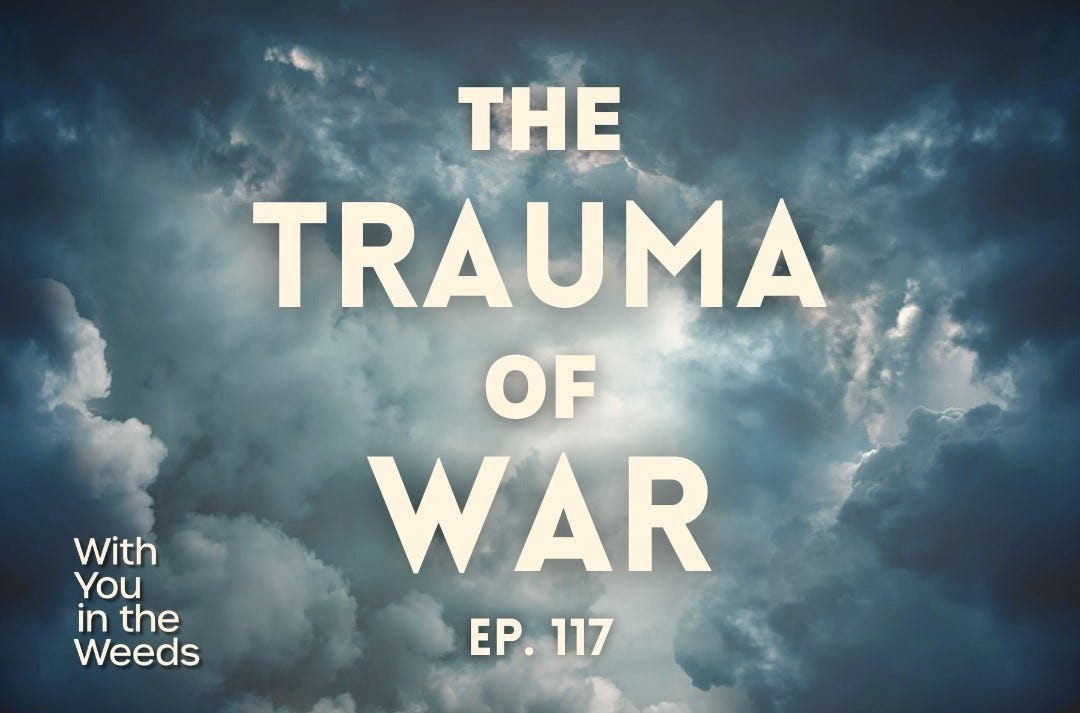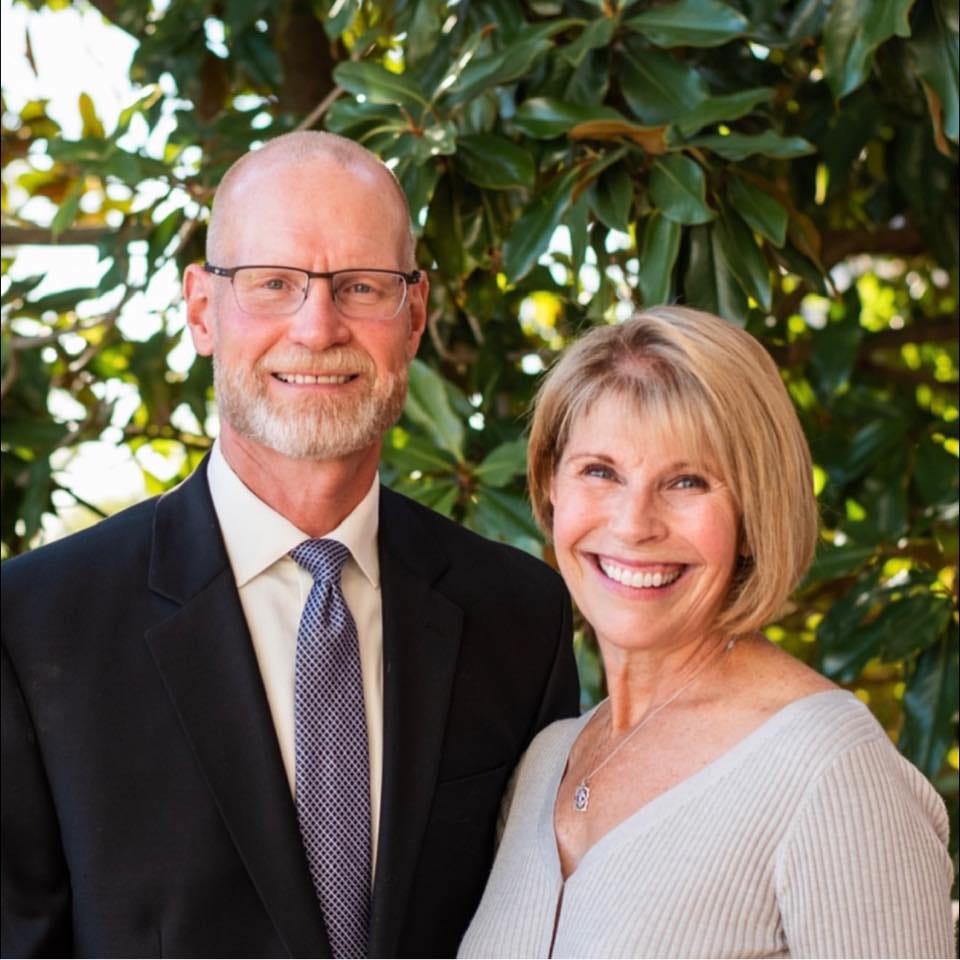The Trauma of War
Helping veterans heal invisible wounds
Sometimes called ‘combat stress’ or ‘shell shock’, the residual trauma from war can have a lasting impact on veterans and their families.
No one knows this better than Dan and Jo Slawski, founders of Guardian Hills Veterans Healing Center, a facility in northern Missouri that provides resources and support for veterans struggling with trauma, including post-traumatic stress (PTS) and moral injury.
In this eye-opening episode of our ongoing series, Surviving and Thriving After Trauma, Shay interviews Dan and Jo to discuss their work helping veterans recover from the physical, emotional, and relational injuries they often face after service.
This important interview highlights:
The mental, physical, and emotional toll of warfare
The ways that trauma affects veterans over the long-term
How veterans and their families can experience healing and wholeness
You will be inspired and encouraged as you hear the Slawskis’ vision for Guardian Hills, and the transformations that are occurring in veterans’ lives on a daily basis.
Shay’s Conversation with Dan & Jo
Shay: Welcome to the podcast! We are so glad to have you here. You both are literally ‘in the weeds’ with veterans and we want to learn more about the work that you do. Tell us a little bit about yourselves and how Guardian Hills came about.
Dan: When 9/11 happened, it caused me to think deeply about my experience with the military. I served in the US Air Force, and my father was a World War II veteran. He came from a dysfunctional family in St. Louis during the Depression era. At age 12, he fled his abusive home and worked on rivers as a bargeman.
In 1942 the merchant marines were recruiting sailors, so my father lied about his age and signed on; he was 14 but said he was 16. On his second voyage in the North Atlantic, his ship was torpedoed. His mother had no idea he was in uniform. She received a telegram saying he was lost at sea and presumed dead.
He was in shock when his ship went down and remembers waking up in Scotland with no idea where he was. Once he recovered, he was put on another ship and served in the Mediterranean, eventually taking part in the invasion of the Philippines. All of this happened by the time he was 17!
Shay: It seems so foreign to us today that a 17-year-old would have experienced so much trauma during such an important developmental stage of his life.
Dan: His trauma affected the next generation. Growing up, we knew my dad had issues. He was prone to rages. He would disappear. He was never physically abusive, but his behavior impacted our household and the fact that he had a sixth-grade education impacted us financially in a negative way.
I became interested in medicine; coming from a family that had no history of anyone going to college, let alone going into medicine, I was really heading into foreign territory. That's where the military came in for me. Jo and I had been dating since high school. We were both on our own at age 18, so we put ourselves through college.
At the beginning of my senior year of college, I was accepted to a top-10 medical school. But I had no way to pay for it. That's when I turned to the military. I decided that the Air Force was the best fit for me. It was life-changing in a very positive way. Suddenly I had a way to pay for school, my books, my instruments, and had a living stipend. That made our lives much easier for the next several years.
Shay: What led to your work with veterans specifically?
Dan: When I entered the military on active duty, I was tasked with setting up a sports medicine outreach for the entire Midwest. Through that, I encountered many veterans from previous eras – WWII, Vietnam, and the Korean War – who had unprocessed, untreated traumatic memories.
I was talking with a veteran POW (prisoner of war), an older gentleman, during his appointment for a knee replacement check-up. I asked him how he ended up a POW. He told me a heart-wrenching story of his plane being shot down and him being turned over the enemy. He was crying as he talked, and said he still had nightmares about his time in enemy hands – and had never told his wife about it.
Shay: Unbelievable. This is how many years later?
Dan: 50 years. So for 50 years, this trauma had stayed with him. That was one of dozens of stories I heard from multiple veterans. I began to realize the impact of wartime trauma. On average, it’s at least 11 years from the traumatic episode to the first major symptoms of PTS in a veteran population.
After I got out of the Air Force, we moved to Nebraska and set up a sports medicine center. I got to know a lot of young individuals who were going into the military to help pay for school. When 9/11 happened, it turned their world upside down. They were sent on multiple deployments and came back markedly changed. We began to look at ways to help, because we were both seeing firsthand the impact of PTS combined with service and moral injury in the veteran population.
Shay: So Dan, in your practice, you're running into people coming back from the war who have experienced all kinds of trauma and you’re looking for ways to help them. Jo, why is helping veterans an equal passion for you?
Jo: I grew up in St. Louis like Dan. In fact, he was my neighbor and my older brother's friend. We went to the same grade school, high school, and college. So, we've known each other for a long, long time.
I'm a survivor of complex childhood trauma. As a result of that, I ended up developing PTS. And I say PTS rather than PTSD, even though the official term is post-traumatic stress disorder, because I would assert, and we've heard from so many of our veterans, that if someone has experienced what I've experienced, or what they've experienced, and they don't come out impacted, then they have a disorder.
At Guardian Hills, we’ve learned that there's a lot of individuals that join the military because it gives them the opportunity to get out of their dysfunctional home early and it also gives them the opportunity to protect others when they've not been protected. As a result, they've oftentimes already experienced complex trauma before going into the military and then they have that trauma compounded.
Shay: Interesting. So how do you then get to this point where you have the idea for a veterans’ facility?
Dan: We looked at different options on how to address PTS and moral injury and we found that many traditional treatments for civilian PTSD didn’t work very well with veterans. But there were retreat-based facilities that were beginning to come up that were having good results. And they weren’t based in cities – they were in rural places where veterans could be out in nature. Being outdoors affects our brains and the way we process information.
We had a farm that I found very healing for my past trauma, and so we decided it would be a good place to have a program for veterans. Not just outdoor activities, but therapeutic practices that would have positive long-term benefits.
Shay: I want to hear more about your facility, but I also want to ask you about the types of challenges that veterans face.
Dan: A staggering number of veterans have PTS. And the outcomes for them, if they don’t have treatment, include substance abuse, homelessness, and a very high suicide rate. About 17 veterans commit suicide per day within our country. It might be almost twice that many, but suicide and homelessness among veterans tends to be underreported.
Jo: There's also a really high correlation between those who've experienced trauma and physical ailments. Things like increased incidence of autoimmune diseases, cardiovascular diseases, joint inflammation, cancer. So it's having a significant impact on physical health as well causing interpersonal and societal challenges.
Shay: Because of your life circumstances, God gave you a vision for this treatment center and brought all the pieces together. Tell me about that.
Dan: As I mentioned, the farm was always my retreat. One day I was sitting on a hill looking out to the east and saw the sun come up. Something just said to me, "This is the place." And now that place where I was sitting that morning is the part of our facility – it’s where our arena is located.
Shay: So you donate the land and raise money. And several veterans’ organizations here in Columbia come alongside you to help make your vision a reality. How did it turn out?
Jo: Guardian Hills has three 4-bedroom, 4-bath cabins. Two of them are used for participants who are coming through. One is exclusively for staff. We also have a 12,000 square foot riding facility, an old chicken coop that's been renovated into an art studio, and a hundred-year-old barn that's our dining and meeting center.
We have a nature trail, a labyrinth, an outdoor fireplace, and a golf course. All of these things work together so that we can provide a peaceful experience for the veterans. And because of the generous donations of so many people, it is entirely without debt.
Shay: Incredible! What is some of the therapeutic education you provide?
Jo: We offer them opportunities to develop the skills they need to thrive. We have horses that work with our vets. Horses will stay away from you if they sense anger. Our vets need to learn how to self-regulate in order to interact with them. We use music and art therapy – even if they start out not wanting to do crafts, by the end of the week they don’t want to stop creating!
We start each day with relaxation techniques. The labyrinth is used for introspection and prayer. Even the meals are healthy so the veterans can learn which types of foods are helpful to their bodies. We end each day around the outdoor fireplace where they can share their progress and insights.
All of the activities are intended to peel away the layers of protection and help the veterans have a spiritual awakening, which is so important for the healing process.
All of the activities are intended to peel away the layers of protection and help the veterans have a spiritual awakening, which is so important for the healing process.
Shay: Can you share a story of healing that has happened in your program?
Jo: One of our first veterans who went through was a delightful woman who had experienced a great deal of childhood trauma before compounding that trauma with her time in the military. When she saw how high her adverse childhood experience (ACE) score was, she felt like her life was over. But I was able to tell her, “I have the same ACE score, and I didn’t get that memo”.
That was an epiphany for her. It gave her permission to understand that what happened in the past didn’t define her. It's what she does going forward that determines her trajectory.
Shay: It’s amazing to see God’s faithfulness to work in people's lives and circumstances and to see you bring about something good to help people who have served us and given their lives for us and have sacrificed so much. What a valuable thing this is in the lives of veterans.
Thank you both for letting God use you to bring this about, and for being here today to tell us about it!
Listen to Shay’s entire conversation with the Slawskis:
Recommended Resources:
Guardian Hills - All about their program for healing trauma for veterans
Welcome Home - Ending homelessness for veterans in Columbia, MO.






